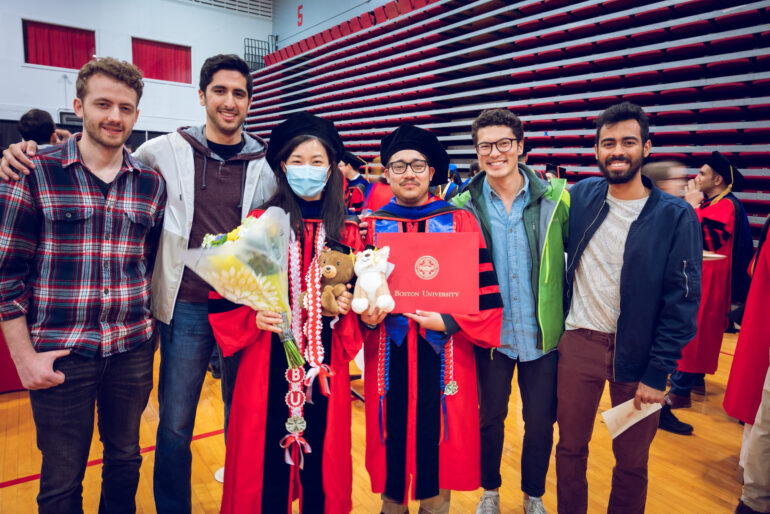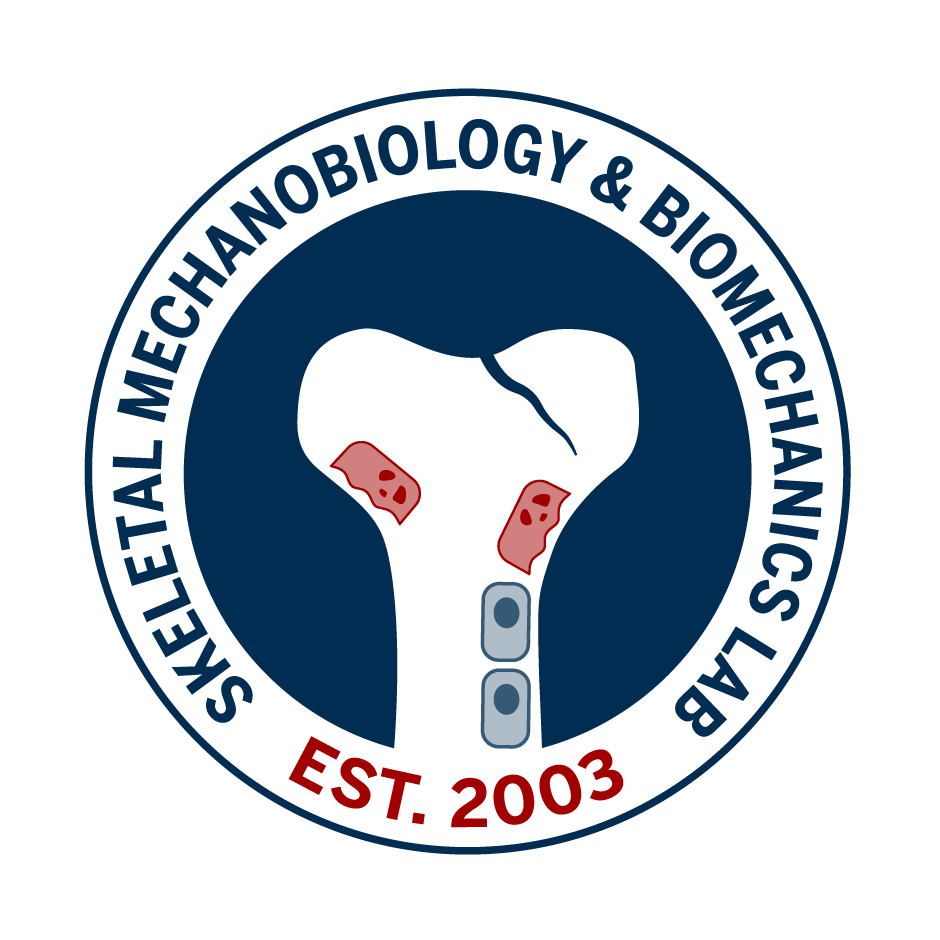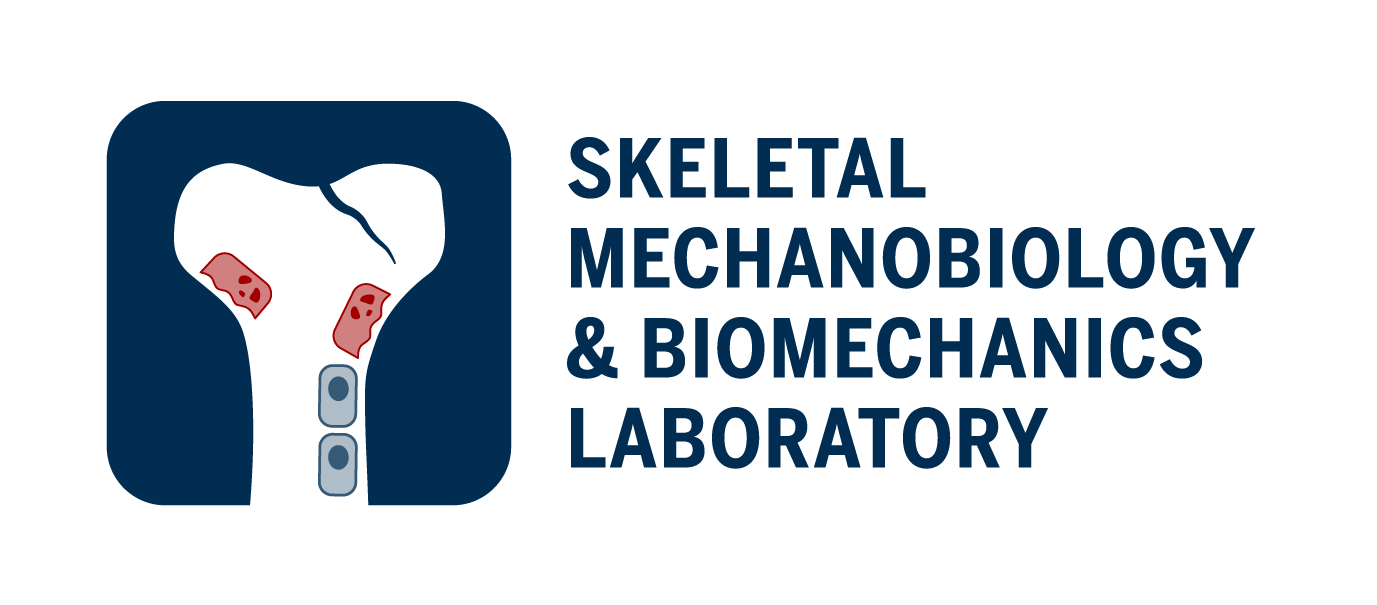ORS (Feb 2025)
Congrats to Neil, Mengyao, and Shengzhi for presenting their work at ORS in Phoenix, Arizona!
Neil: “Biomechanical, Structural, and Composition Characterization of the Vertebra-disc Interface”
Mengyao: “PRMT5 Deficiency Under Low Se Status Exuberates Cartilage ECM Degradation”
Shengzhi: “A Data-driven Framework for Modulus-density Relationship of Human Lumbar Vertebral Body”
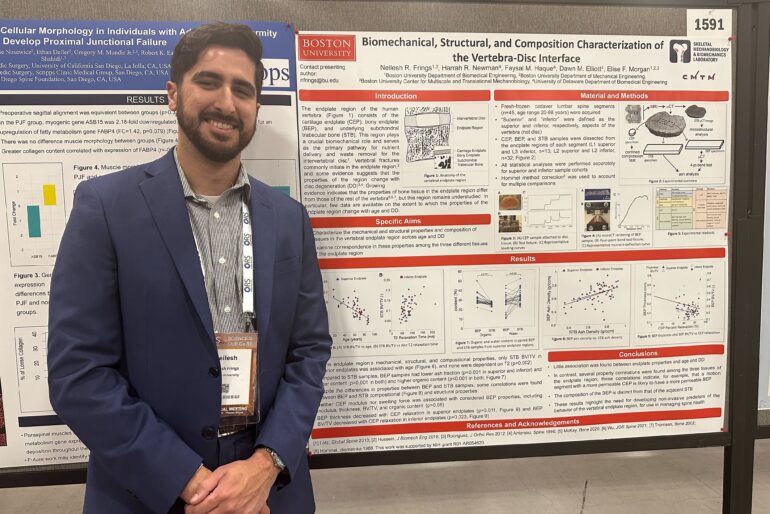
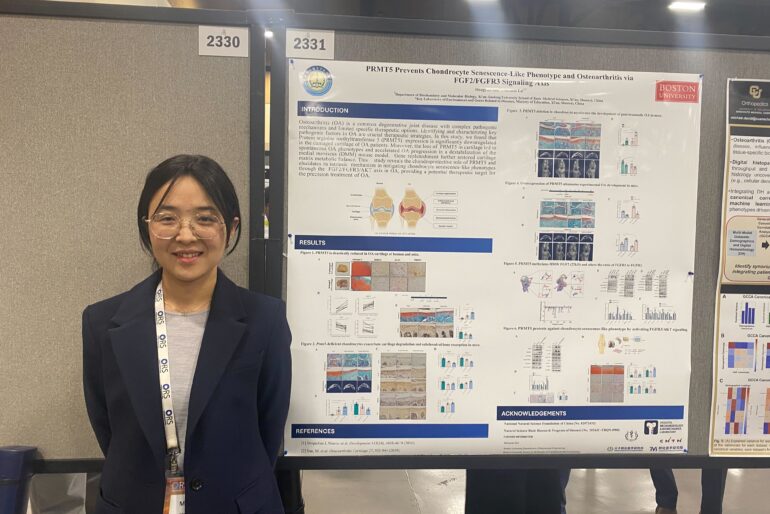

Lab Ski Trip (Feb 2025)
It may have been freezing cold, but our skiing and snowboarding skills are fire.
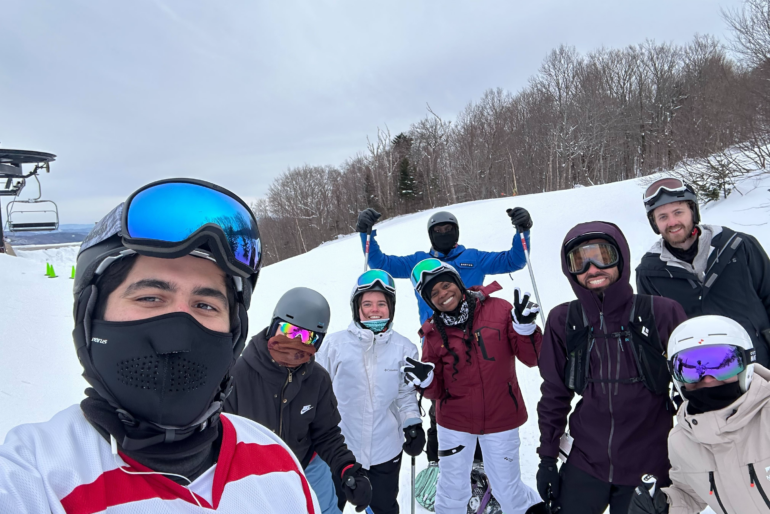
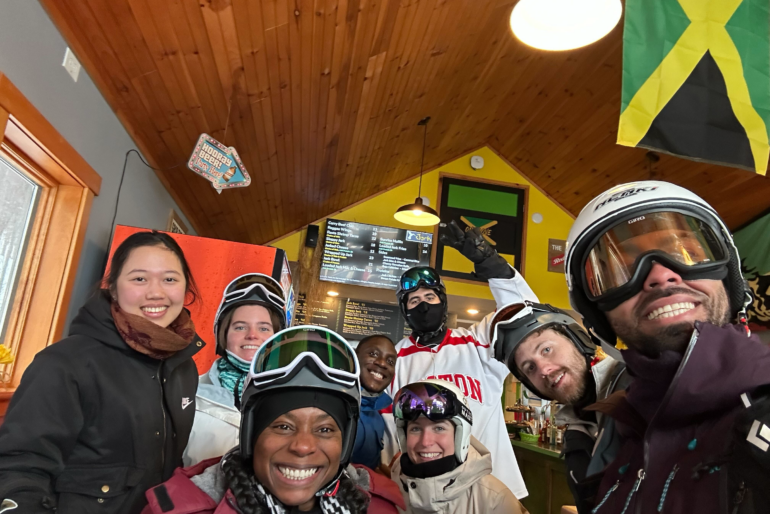
Shengzhi Luan's recent publication (Jan 2025)
A data-driven framework for developing a unified density-modulus relationship for the human lumbar vertebral body
- A data-driven framework integrating experimental testing and numerical modeling of the human lumbar vertebra is used to develop a unified modulus-density relationship across the entire vertebral body, without needing to differentiate between cancellous and cortical bone.
- The relationships effectively recovered bone tissue modulus at the microscale
- The relationships were also used to investigate structure-property correlations: compressive stiffness exhibited a moderate correlation with bone mineral density, whereas bending stiffness correlated strongly with bone mineral content.

Pumpkin Carving (Oct 2024)
A favorite lab tradition– pumpkin carving!
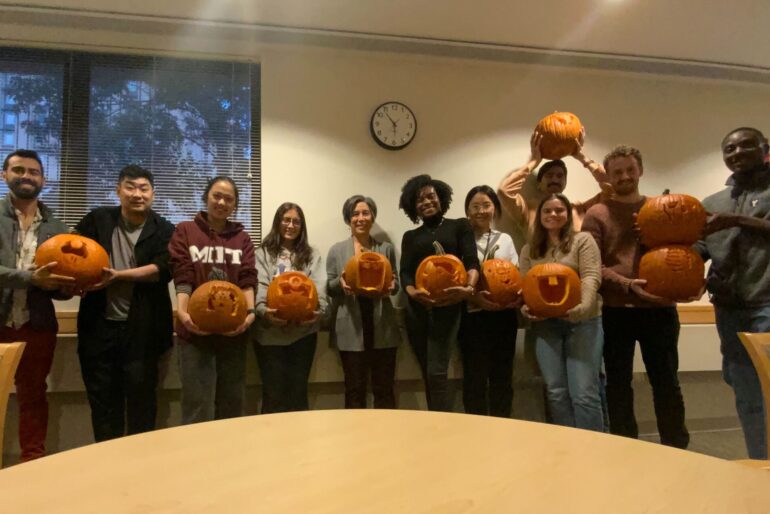
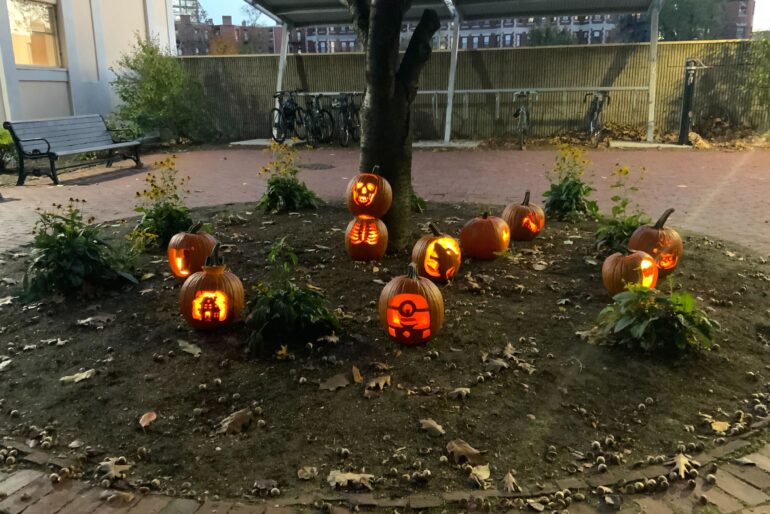
Conference: ASBMR (Sep 27-30, 2024)
Tim Josephson presented his poster entitled “Modeling Formation and Differentiation of Skeletal Tissues” on September 29, 2024 at the ASBMR 2024 Annual Meeting in Toronto.

Vivian Shi's recent publication (Aug 2024)
Estrogen and estrogen receptors mediate the mechanobiology of bone disease and repair
- Estrogen has positive effects on the balance of bone formation activity of bone cells.
- Estrogen and estrogen receptors couple with mechanotransduction signaling pathways.
- Combining estrogen and exercise to treat postmenopausal bone loss merits more study.
- Estrogen improves fracture healing in animals, suggesting prospects for clinical use.
Conference: EMI/PMC (May 2024)
Dr. Shengzhi Luan presented his talk entitled “A data-driven framework for modulus-density relationship of lumbar vertebral body” on May 30th, 2024 at the Engineering Mechanics Institute Conference and Probabilistic Mechanics & Reliability Conference in Chicago.
Tim Josephson's recent publication (July 2024)
Mechanobiological optimization of scaffolds for bone tissue engineering
- We aim to develop a design approach able to generate architectures for synthetic bone graft scaffolds that will promote bone formation, thus generating new bone tissue while ameliorating the limitations of autografts and allografts.
- A topology-varying design optimization method, the “mixed-topology” approach, that generates new designs from a set of starting structures is presented.
- The results demonstrate that this approach can successfully generate scaffold designs with improved microenvironments, taking into account different combinations of relevant stimuli and constraints.
MHet Mini Symposium (July 8, 2024)
Some of the lab’s PhD students presented posters at the Musculoskeletal Health (MHet) Affinity Research Center’s (ARC) Mini-Symposium entitled “Tailoring the Mechanical Microenvironment to Enhance Osteogenesis in Bone Tissue Engineering Scaffolds” (Tim Josephson), “Risk of Vertebral Endplate Failure During Vertebral Fracture” (Neil Frings), and “Aging-related mechanical degradation of cortical bone is driven by microstructure changes in addition to porosity (André Gutiérrez Marty). Congratulations to Neil Frings for winning the 2nd place Poster Presentation Award!
Dr. Ingmar Fleps's recent publication (Jan 2024)
Geometric determinants of the mechanical behavior of image‐based finite element models of the intervertebral disc
- This study describes a multiphasic FE modeling approach for noninvasive estimates of subject-specific intervertebral disc mechanical behavior based on medical imaging.
- The models (n = 22) found that disc geometry had a strong influence on the predicted moments and forces on the disc while disc height had a systematic influence on the internal disc stresses and tractions at the disc-to-bone interface (with strong variability in the predicted internal disc stresses and tractions observed between the models)
- The influence of disc geometry on mechanics highlights the importance of disc-specific modeling to estimate disc injury risk, loading on the adjacent vertebral bodies, and the mechanical environment present in disc tissues.
Jack Kendall's recent publication (Dec 2023)
An in silico micro-multi physics agent-based approach for simulating bone regeneration in a mouse femur defect model
- This paper presents a micro-MPA model for bone regeneration following an osteotomy that includes vasculature, bone, and immune cells, as well as their interaction with the local environment.
- Both the local mechanical environment and cytokine concentrations were found to be key factors in promoting bone regeneration in the validated model, which also matched clinical observations that larger gap sizes correlate with worse healing outcomes and ultimately simulated non-union.
- This model could help design and guide future experimental studies in bone repair, by identifying which are the most critical in vivo experiments to perform.
Pumpkin carving social (Nov 2023)
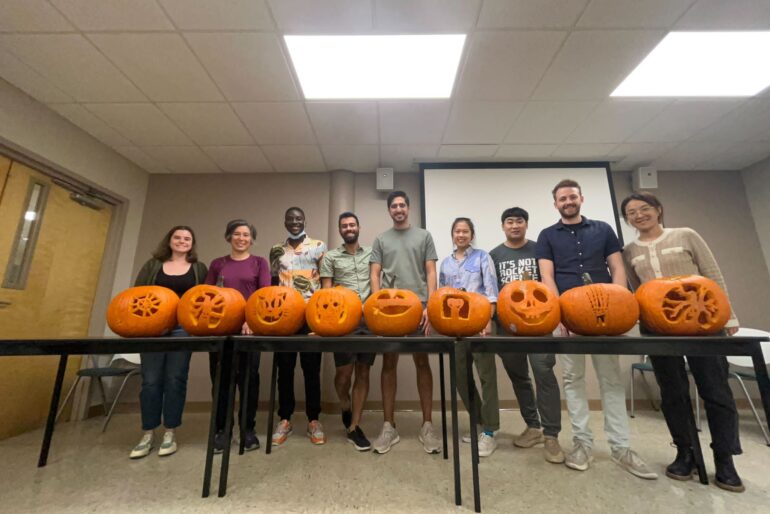


Dassault Academic Regional Meeting (Oct 2023)
Congratulations to Neil Frings for receiving the top award presented by VIAS3D for his talk entitled “Risk of Vertebral Endplate Failure During Vertebral Fracture” on October 19, 2023!
Tim Josephson's recent publication (Oct 2023)
Harnessing mechanical cues in the cellular microenvironment for bone regeneration
In this review recently published in Frontiers in Physiology, we argue that some of the most important future experiments in orthopaedic mechanobiology will test the effects of multiple, concurrent microenvironmental stimuli on MSCs.
In particular, we review how skeletal cells are responsive to a variety of microenvironmental cues, such as strain, fluid shear stress, curvature, & substrate stiffness. These cues can direct the differentiation of marrow stromal cells (MSCs), either promoting or inhibiting osteogenesis.
Finally, we discuss the current understanding of how MSCs respond to these stimuli, both individually and in combination, and highlight areas where additional work is needed to advance the field of skeletal mechanobiology.
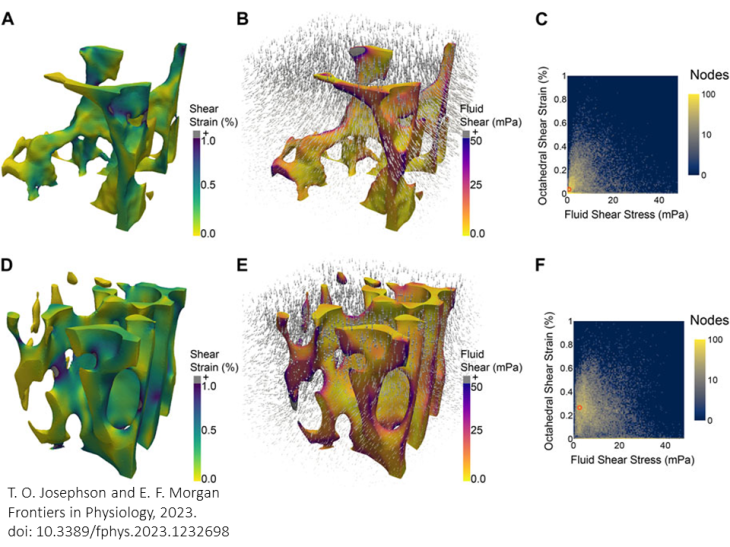
Conference: ASBMR (Oct 13-16, 2023)

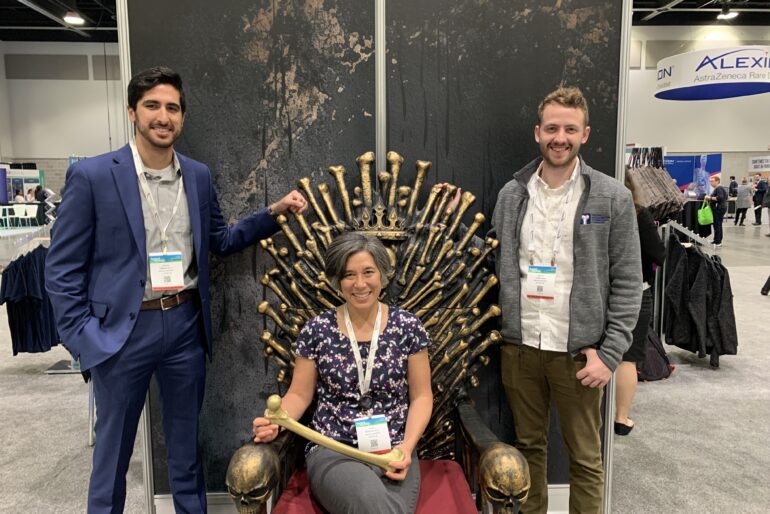

Tim and Neil both presented posters at the ASBMR 2023 Annual Meeting held in October
Neilesh Frings et al. “Risk of Vertebral Endplate Failure During Vertebral Fracture.” 2023.
André Gutiérrez Marty's recent publication (Sep 2023)
Multiscale Theoretical Model shows that aging-related mechanical degradation of cortical bone is driven by microstructural changes in addition to porosity
- A one-dimensional fiber bundle model was developed to investigate the mechanistic role of microstructural changes in the macroscale mechanical properties of cortical bone.
- Toughness and ultimate strain of cortical bone were shown to depend the most on post-yield properties of interstitial tissue. This effect is due, in part, to the lack of data describing these properties.
- By isolating the mechanical behavior of osteon vs. interstitial bone tissue, we found that aging-related changes in the plastic behavior of interstitial tissue directly affects the resulting ultimate strain and toughness of cortical bone at the macroscale.
Our findings point to the importance of studying microstructural changes beyond porosity, such as microconstituent material properties, as a means for understanding the aging-related degradation in strength and toughness, and the higher incidence of fractures, of cortical bone.

Summer Social: Kayaking (Aug 2023)
SMBL takes to the river for round 2 of kayaking and paddling on the Charles!



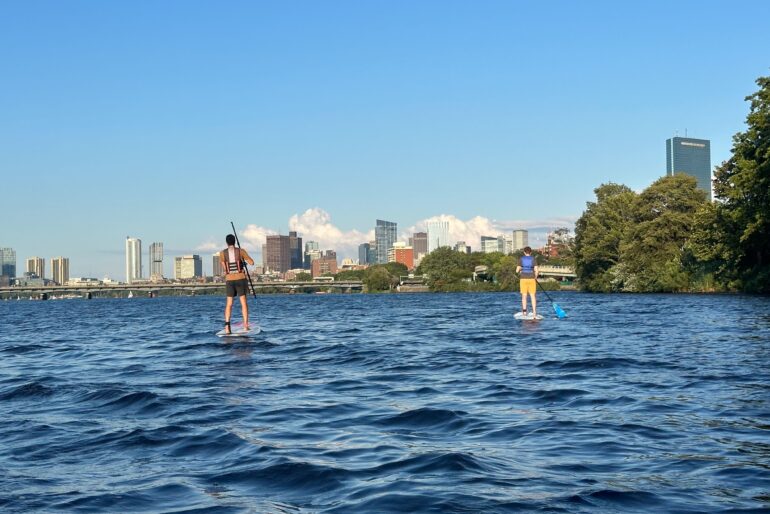


Summer Social: Lab hike (June 2023)
Members from the Connizzo lab joined the SMBL for a hike up Mount Moosilauke in June 2023. Thank you to the Dartmouth conservators for all the great work in conserving the land and edifying visitors like us!
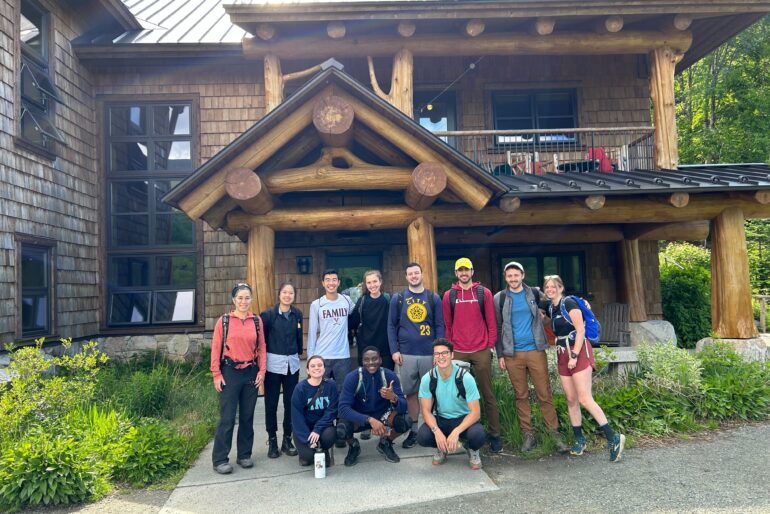
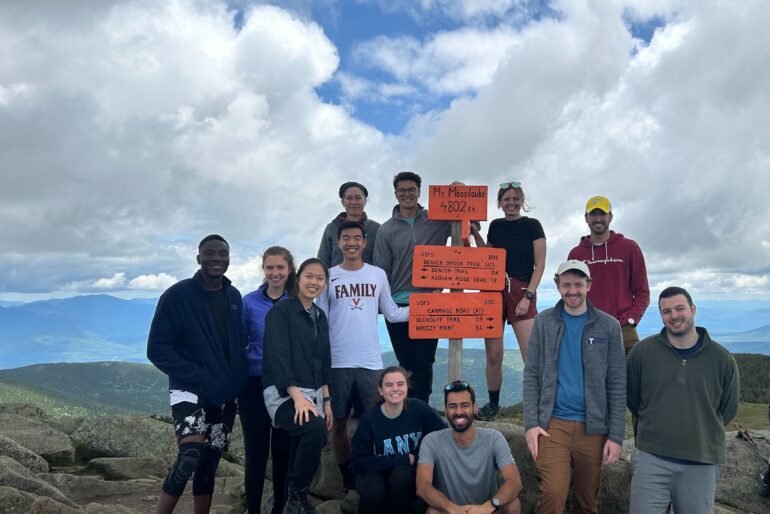


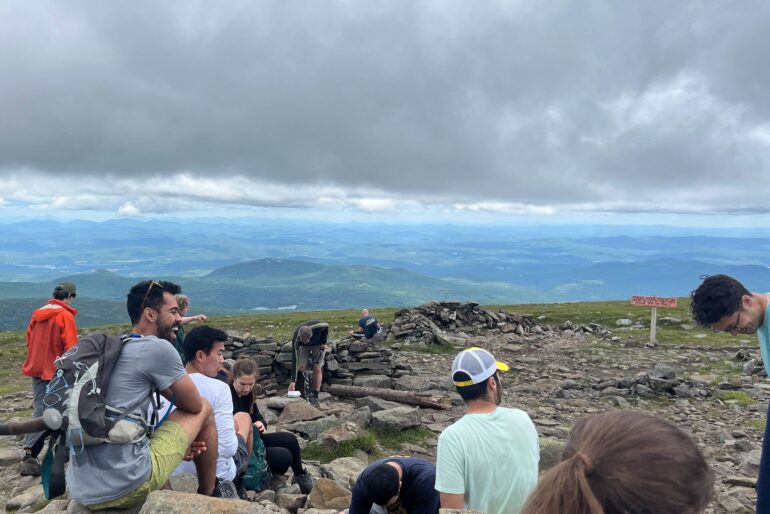
Conference: SB3C (June 2023)
Neilesh Frings et al. “Risk of Bony Endplate Failure During Vertebral Fracture.” 2023.
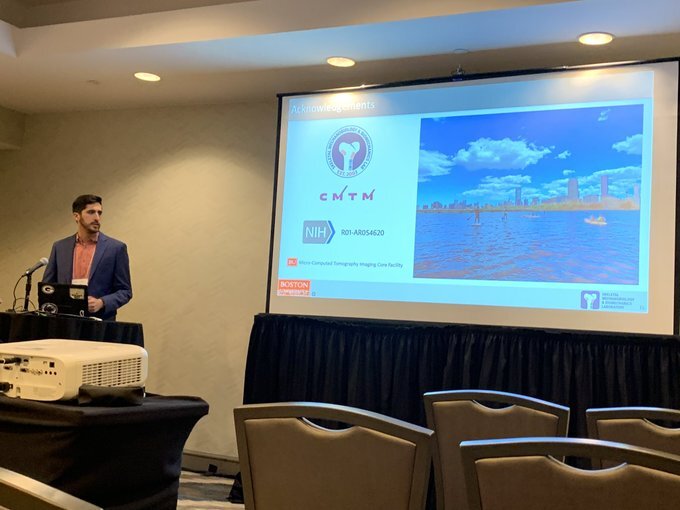
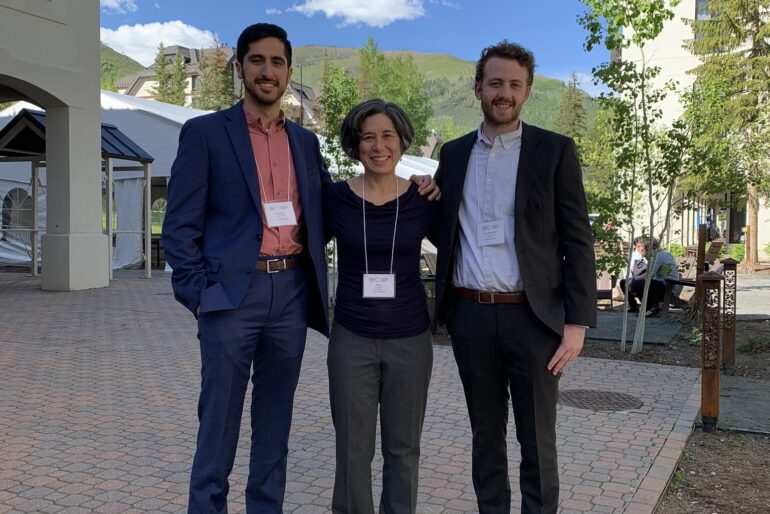
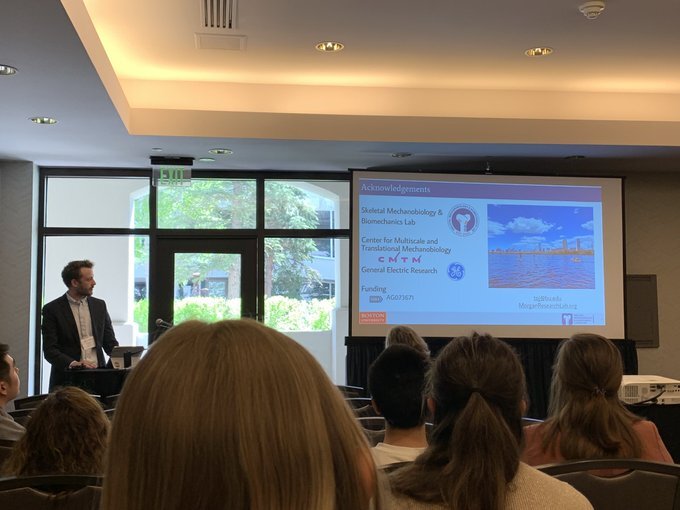
May 2023 Graduation
Congratulations to Josh Auger for successfully graduating and for his outstanding defense of his thesis titled “Quantitative Assessment and Mechanical Implications of Bone Density and Microstructure in Hip Osteoarthritis.”
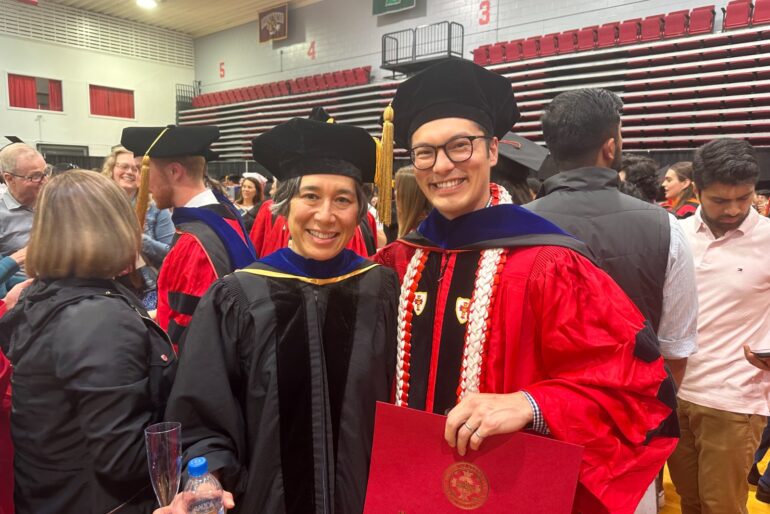
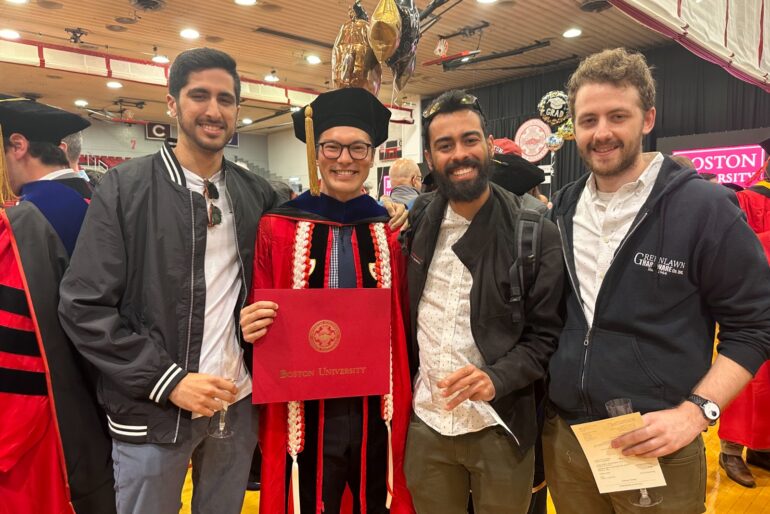
Winter 2023 Socials: Go-karting and Mini Golf

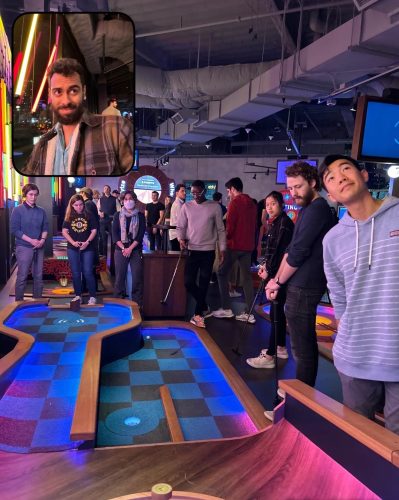
Conference: ORS (Feb 2023)
A. Gutierrez Marty et al. “Aging-related mechanical degradation of cortical bone is driven by microstructural changes in addition to porosity.
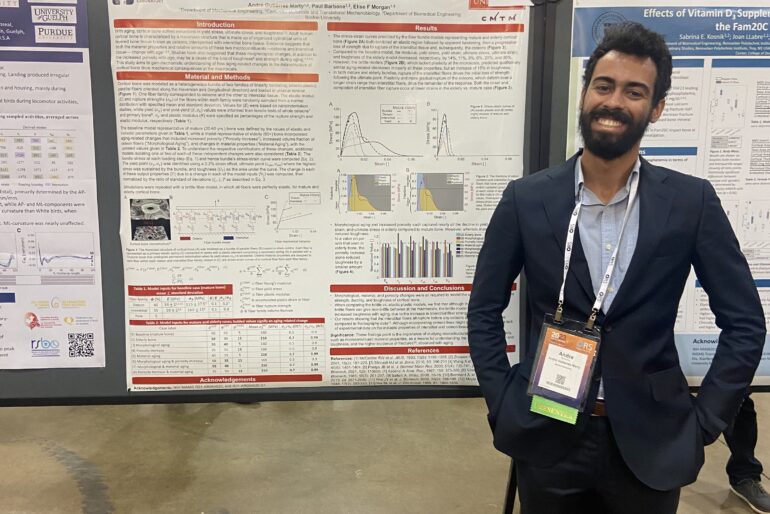
May 2022 Graduation
Congratulations to Qiao Wu, with her thesis titled “Study of Deformation and Failure Mechanisms in the Human Vertebra” and Aldair Góngora, with his thesis “Accelerating Mechanical Design Using Autonomous Experimentation” (which also won PhD Dissertation Award) on their exemplary work leading up to graduation from the College.
